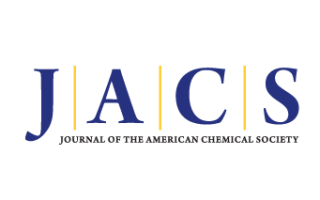Adsorption of Small Organic Molecules on Graphene
 Petr Lazar , Frantisek Karlicky , Petr Jurecka , Mikulas Kocman , Eva Otyepkova , Klara Safarova , and Michal Otyepka, J. Am. Chem. Soc., Just Accepted Manuscript
Petr Lazar , Frantisek Karlicky , Petr Jurecka , Mikulas Kocman , Eva Otyepkova , Klara Safarova , and Michal Otyepka, J. Am. Chem. Soc., Just Accepted Manuscript
135(16), 6372-6377, 2013
DOI: 10.1021/ja403162r
Abstract:
We present a combined experimental and theoretical quantification of the adsorption enthalpies of seven organic molecules (acetone, acetonitrile, dichloromethane, ethanol, ethylacetate, hexane, and toluene) on graphene. Adsorption enthalpies were measured by inverse gas chromatography and ranged from -5.9 kcal/mol for dichloromethane to -13.5 kcal/mol for toluene. The strength of interaction between graphene and the organic molecules was estimated by density functional theory (PBE, B97D, M06-2X, optB88-vdW), wave-function theory (MP2, SCS(MI)-MP2, MP2.5, MP2.X and CCSD(T)) and empirical calculations (OPLS-AA) using two graphene models – coronene and infinite graphene. Symmetry adapted perturbation theory (SAPT) calculations indicated that the interactions were governed by London dispersive forces (amounting to ~60% of attractive interactions), even for the polar molecules. The results also showed that the adsorption enthalpies were largely controlled by the interaction energy. Adsorption enthalpies obtained from ab initio molecular dynamics employing non-local optB88-vdW functional were in excellent agreement with the experimental data, indicating that the functional can cover physical phenomena behind adsorption of organic molecules on graphene sufficiently well.
 Petr Lazar , Frantisek Karlicky , Petr Jurecka , Mikulas Kocman , Eva Otyepkova , Klara Safarova , and Michal Otyepka, J. Am. Chem. Soc., Just Accepted Manuscript
Petr Lazar , Frantisek Karlicky , Petr Jurecka , Mikulas Kocman , Eva Otyepkova , Klara Safarova , and Michal Otyepka, J. Am. Chem. Soc., Just Accepted Manuscript
135(16), 6372-6377, 2013
DOI: 10.1021/ja403162r
Abstract:
We present a combined experimental and theoretical quantification of the adsorption enthalpies of seven organic molecules (acetone, acetonitrile, dichloromethane, ethanol, ethylacetate, hexane, and toluene) on graphene. Adsorption enthalpies were measured by inverse gas chromatography and ranged from -5.9 kcal/mol for dichloromethane to -13.5 kcal/mol for toluene. The strength of interaction between graphene and the organic molecules was estimated by density functional theory (PBE, B97D, M06-2X, optB88-vdW), wave-function theory (MP2, SCS(MI)-MP2, MP2.5, MP2.X and CCSD(T)) and empirical calculations (OPLS-AA) using two graphene models – coronene and infinite graphene. Symmetry adapted perturbation theory (SAPT) calculations indicated that the interactions were governed by London dispersive forces (amounting to ~60% of attractive interactions), even for the polar molecules. The results also showed that the adsorption enthalpies were largely controlled by the interaction energy. Adsorption enthalpies obtained from ab initio molecular dynamics employing non-local optB88-vdW functional were in excellent agreement with the experimental data, indicating that the functional can cover physical phenomena behind adsorption of organic molecules on graphene sufficiently well.


